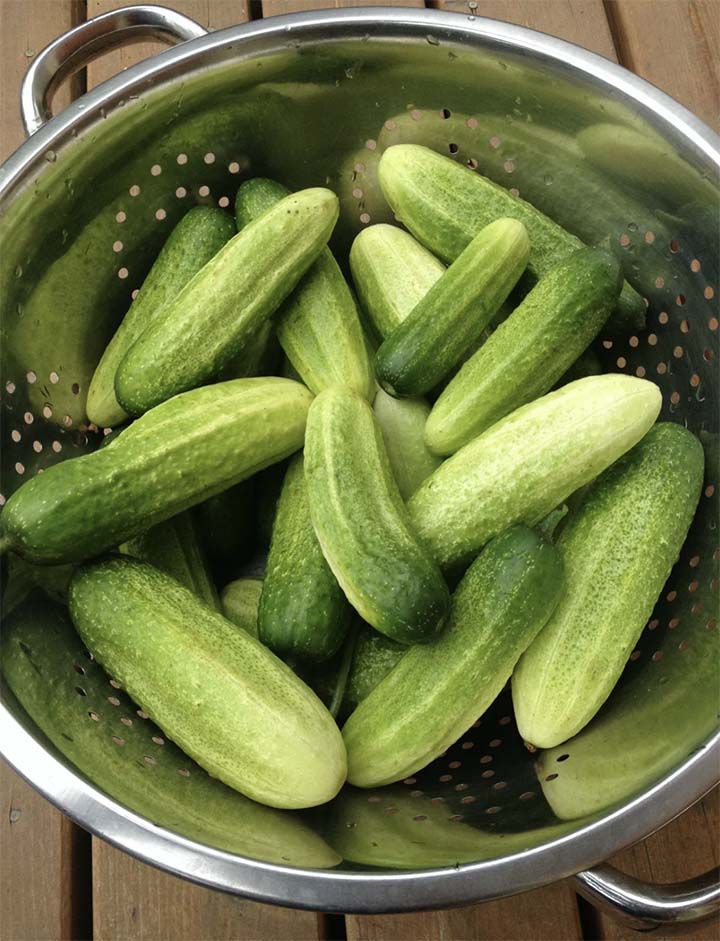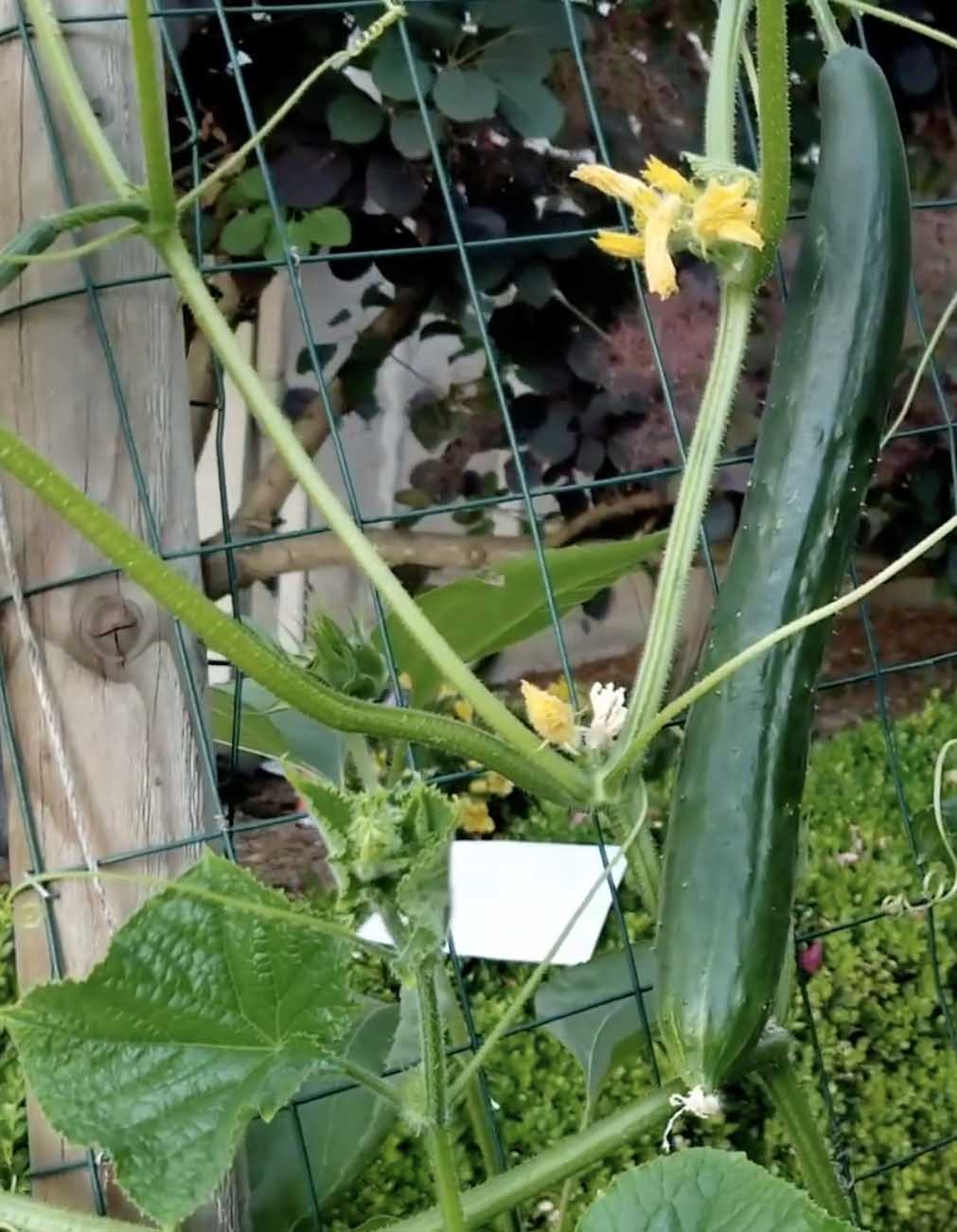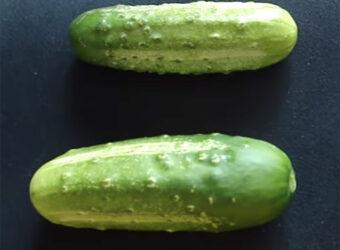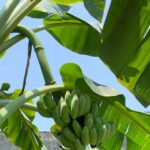There seem to be two types of people: those who think cucumbers just taste like crunchy water and those who know these vegetables can be packed with flavor. No matter what camp you fall into, finding the best tasting cucumbers can change your opinion of these summertime treats.
We’re pushing aside the bland, watery, and bitter cucumbers to make room for sweet and flavorful varieties that liven up salads and create great-tasting pickles.
I’ll cover some of the best tasting cucumbers, including pickling, slicing, and seedless varieties.
What Impacts Cucumber Taste?
Let’s get one thing out of the way: the variety isn’t the only thing that impacts how a cucumber tastes. That means if you take a bite of a bitter or bland cucumber, you shouldn’t automatically assume you should give up on that variety.
Environmental Conditions
Environmental factors can also impact a cucumber’s flavor. Stressful conditions can lead the plants to send large amounts of cucurbitacin into their fruits. While cucurbitacin helps protect the leaves and stems from pests, this compound causes fruits to become bitter.
Temperature stress can cause cucumbers to send cucurbitacin to their fruits. Both cold, wet weather and hot, dry weather stress cucumber plants. Therefore, you should avoid planting cucumbers when it’s cold and water them well once summer’s heat arrives.
A lack of water and/or nutrients also causes plants to become stressed, leading to bitter fruits. That means you should keep your cucumber plants well-watered and provide them with a balanced fertilizer.
What Is a Burpless Cucumber?
Sometimes, people use the term burpless to describe cucumbers with a low level of bitterness. But what does this really mean?
Well, a burpless cucumber is just a cucumber that was bred to have a low level of cucurbitacin. That means they typically have lower levels of bitterness, but highly stressed plants may still produce bitter fruits.
The Best Tasting Cucumber Varieties
While variety isn’t the only factor impacting how a cucumber tastes, it does play a big role. If you want cucumbers that are free from bitterness, full of flavor, and supremely crunchy, try planting some of the following varieties.
1. Tasty Green

Type: Japanese
Days to maturity: 60 days
Mature length: nine inches
I first encountered the Tasty Green cucumber while working at a vegetable farm in Virginia. When we took these cucumbers to the farmers’ market, shoppers were often wary of this cucumber’s slightly irregular appearance, but the sign proclaiming ‘farmers’ favorite’ encouraged customers to try them.
And once they did, they were hooked!
Plants produce Japanese cucumbers with thin skin and a long, slender shape. The fruits are typically ready to harvest when they are between seven and nine inches long, although you can get away with picking them when they’re a bit longer.
Since this variety is burpless, it’s typically low in bitterness. The flavor is a nice mixture of sweet and tart, and the cukes have a prominent crunch.
If you grow these cucumbers on the ground, the fruits may curl into an S-shape or complete swirl. These funky-shaped cucumbers still taste good, but you should trellis the plants if you want longer fruits.
You can purchase Tasty Green seeds from Botanical Interests or High Mowing Organic Seeds.
2. Suyo Long

Type: Japanese
Days to maturity: 61 days
Mature length: 15 inches
The Suyo Long cucumber is one of my personal favorites. These cucumbers seem to be almost extra-crunchy, and their long length means that you only need a few to make a cucumber salad or other refreshing dish.
At first glance, these cucumbers can be a bit intimidating due to their spiny skin and sometimes wonky shape. I don’t find the skin very irritating, so I leave it on when eating. However, you can also easily peel the skin off if you prefer.
These cucumbers often curl when their vines are left to trail along the ground, so you’ll want to trellis the plants if you’re hoping for straight cucumbers. A cattle panel, fencing, or Hortinova netting are all good options.
So, what about the taste?
Suyo Long cucumbers are burpless and sweet. They are rather mild in flavor and are great on their own or added to salads and sandwiches.
And as mentioned above, these guys are crunchy. The kind of crunch you yearn for in a pickle and chase after when making a Taziki salad. Their ribbed shape also means that cutting these cucumbers into rounds leads to slices with frilled edges.
Since these cucumbers can grow so long and are prolific producers, you may only need to plant one or two plants. The fruits typically grow over a foot long, and the cucumbers can even remain sweet and crunchy once they top 20 inches.
You can find Suyo Long seeds at Johnny’s Selected Seeds and Southern Exposure Seed Exchange.
3. Diva

Type: thin-skinned slicer
Days to maturity: 58 days
Mature length: seven inches
If you’re after a thin-skinned, seedless cucumber, Diva is a great choice. This climbing cucumber variety produces medium-sized fruits with smooth, dark green skin.
Diva is parthenocarpic, which means the plants can produce fruit even if the flowers aren’t fertilized. Not only does this mean this variety can be grown in sealed high-tunnels or under protective row covers, but it also means the cucumbers are seedless!
These cucumbers are best when picked small, so keep an eye on the plants and harvest regularly. As long as you get them when they’re under seven inches long, the fruits are crispy and sweet with a hint of tartness.
The plants are resistant to various common diseases, including powdery mildew, cucumber vein yellowing virus, and scab.
Look for Diva seeds at Johnny’s Selected Seeds and Eden Brothers.
4. Orca

Type: thin-skinned English
Days to maturity: 58 days
Mature length: 15 inches
Like the other cucumber varieties on this list, the Orca is a winner when it comes to taste. It’s full of flavor, with sweetness and acidity all in a single bit. And bitterness? Not with these cucumbers!
Orca fruits have thin skin that even the most discerning eaters don’t mind. Of course, you can peel them if you really don’t want to eat the skin.
One factor that makes Orca cucumbers stand out is their impressive length. Fruits can reach up to 20 inches while still remaining crunchy, flavorful, and bitterless. That means you only need to pick one or two fruits to end up with a sizable harvest.
The cucumbers typically grow straight whether you let the plants trail on the ground or train them to climb up a trellis.
You can buy Orca cucumber seeds from Osborne Quality Seeds.
5. Manny
Type: thin-skinned English
Days to maturity: 58 days
Mature length: seven inches
If you’re looking for a ‘normal’ English-type cucumber, Manny is a great option! These plants produce thin-skinned fruits that are about seven inches long.
The cucumbers are slightly ribbed, producing an interesting shape when sliced. However, the fruits are also delicious when cut into spears or eaten whole.
Their flavor is mostly sweet with a little bit of acidity to help balance it out.
The Manny cucumber performs well even when temperatures are a little on the cold side or extra hot. While these temperatures often turn cucumbers bitter, Manny cucumbers tend to remain free from bitterness.
You can buy Manny cucumber seeds from High Mowing Organic Seeds.
6. Vorgebirgstrauben

Type: pickling
Days to maturity: 55 days
Mature length: three inches
When it comes time to make cucumber pickles, you can use almost any variety of cucumber. However, small pickling cucumbers are perfect for keeping whole or slicing into easy-to-hold spears.
The problem with pickling cucumbers is that they often develop pointed ends, an off putting bitterness, or an odd texture. And nobody wants that.
That’s where the Vorgebirgstrauben comes in! This cucumber may have a difficult to pronounce name, but it is a winner when it comes to pickling cucumbers.
The plants consistently produce fruits over multiple weeks, and the cucumbers are rarely misshapen. They also remain sweet and crisp without any bitterness.
The skins are covered in small bumps that lead to a fun texture when you eat them.
Still have doubts about the flavor of this cucumber? The seed breeders at Uprising Seeds have trialed dozens of pickling cucumbers over the years. But the Vorgebirgstrauben was the first one that they believed was good enough to breed for seed sales!
With that said, look for Vorgebirgstrauben seeds at Uprising Organics.
7. Mexican Sour Gherkin

Type: mini
Days to maturity: 67 days
Mature length: one inch
When you think of cucumbers, you probably think of slicing cukes or smaller picklers. But those aren’t the only types of cucumbers out there!
Mexican Sour Gherkins, also known as cucamelons or mouse melons, are tiny fruits that only grow to about an inch long! They are oblong in shape and have green-patterned skin, making them look like miniature watermelons.
Since the fruits are so small, they take longer to pick than larger cucumbers. However, their unique flavor makes the extra work worth it.
These tiny fruits aren’t true cucumbers, but they have a familiar cucumber taste with unique citrus undertones. I think they almost taste like cucumbers that have been doused with a few squirts of lemon or lime juice.
It’s important to harvest these fruits when they’re still small since they become seedy and mushy when they’re left to grow larger than one inch.
Although these cucumbers are quite small, the fruits still grow on long vines that take a couple of months to begin producing fruit.
You can purchase Mexican Sour Gherkin seeds at Johnny’s Selected Seeds and High Mowing Organic Seeds.
Tips for Growing Great Tasting Cucumbers
Now that you know some of the best tasting cucumber varieties, I’m going to introduce you to a few tips to end up with delicious cukes.
First, remember that cucumbers are warm-weather plants. That means you should wait until nighttime temperatures are consistently above 60°F before planting cucumbers outdoors. May or June is typically a good month to begin planting them.
Once your cucumber plants are in the ground, make sure to keep the soil well-watered. Cucumbers are mostly water, and the plants require lots of moisture to thrive. Dry soil can lead to bitter and/or misshapen cucumbers.
When you water, thoroughly soak the soil to encourage the plants to develop deep roots. And remember that plants require more water in hot weather!
Since excessive stress can lead to bitter cucumbers, do your best to protect your plants from common pests. Cucumber beetles love to chew on cucumber leaves, stems, and fruits. I like covering young plants with insect netting or row cover to exclude these pests.
By the time the plants begin to flower, they are often strong enough to sustain a bit of cucumber beetle damage. If the pests are problematic, you can set out yellow sticky traps or spray the pests with neem oil.
Finally, remember to pick your cucumbers when they’re the right size! The ideal harvest size depends on the variety, so make sure to research what type you’re growing. If you pick the fruits when they’re too big, you may end up with watery and soft cucumbers.
Wrapping Up
With such a wide variety of cucumbers available, it can be tough to know what types to grow! Choosing one of the best tasting cucumber varieties will lead to fruits that are sweet and crunchy with little bitterness.
After you plant one of these varieties, remember to care for your cucumber plants well. Providing full sun, lots of water, and adequate fertilizer will help the plants thrive.
Frequently Asked Questions
Which Cucumbers Are the Least Bitter?
If you want to avoid bitter cucumbers, look for burpless varieties. Tasty green, Diva, and Suyo Long are just a few types of burpless cucumbers.
Are Bigger Cucumbers Better?
Bigger cucumbers don’t necessarily taste better or worse. The size of the cucumber depends on the variety as well as when it was harvested. However, cucumbers that are harvested when they’re too large may be watery, bitter, or mushy.






